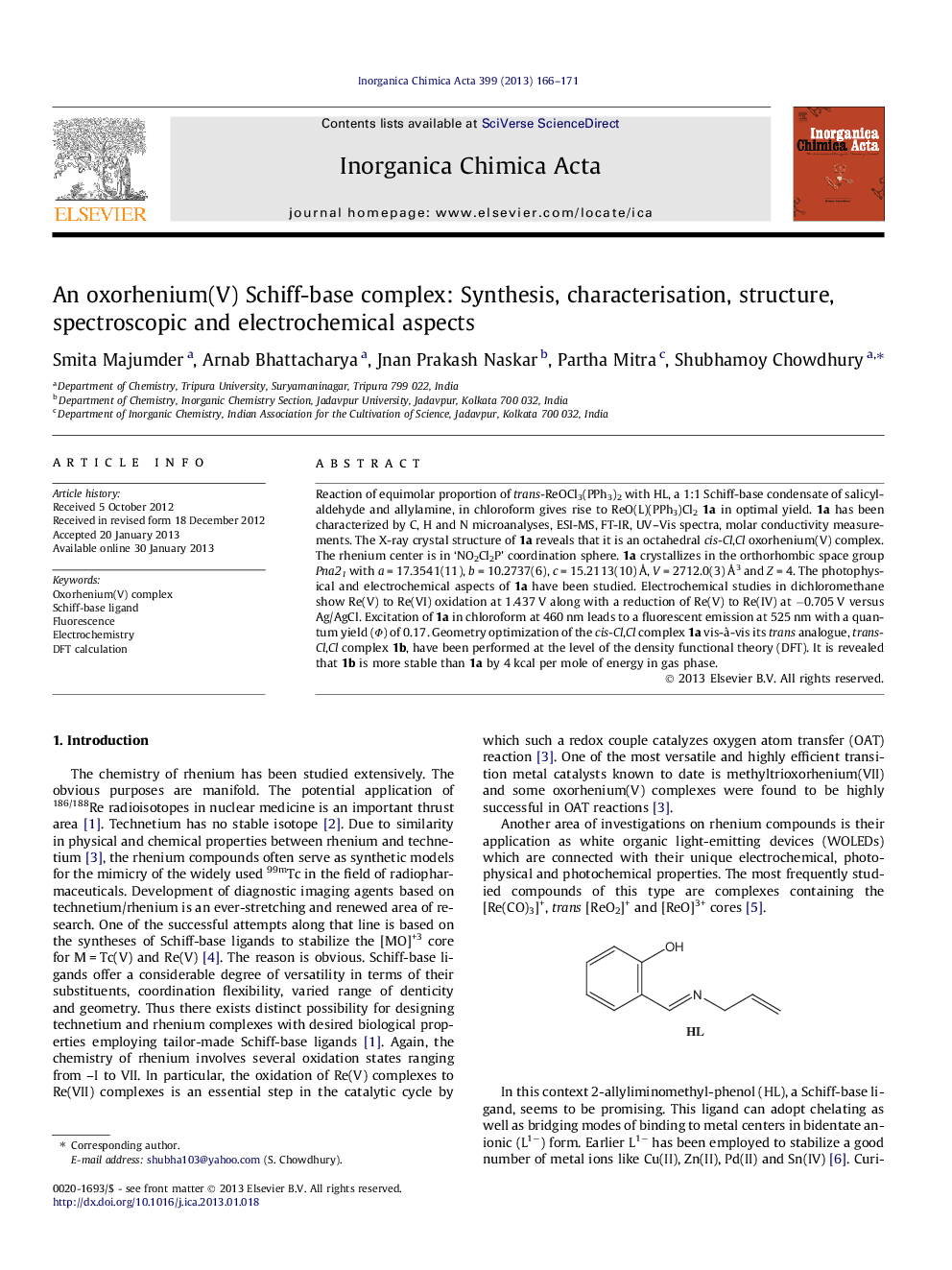| Article ID | Journal | Published Year | Pages | File Type |
|---|---|---|---|---|
| 1307209 | Inorganica Chimica Acta | 2013 | 6 Pages |
Reaction of equimolar proportion of trans-ReOCl3(PPh3)2 with HL, a 1:1 Schiff-base condensate of salicylaldehyde and allylamine, in chloroform gives rise to ReO(L)(PPh3)Cl21a in optimal yield. 1a has been characterized by C, H and N microanalyses, ESI-MS, FT-IR, UV–Vis spectra, molar conductivity measurements. The X-ray crystal structure of 1a reveals that it is an octahedral cis-Cl,Cl oxorhenium(V) complex. The rhenium center is in ‘NO2Cl2P’ coordination sphere. 1a crystallizes in the orthorhombic space group Pna21 with a = 17.3541(11), b = 10.2737(6), c = 15.2113(10) Å, V = 2712.0(3) Å3 and Z = 4. The photophysical and electrochemical aspects of 1a have been studied. Electrochemical studies in dichloromethane show Re(V) to Re(VI) oxidation at 1.437 V along with a reduction of Re(V) to Re(IV) at −0.705 V versus Ag/AgCl. Excitation of 1a in chloroform at 460 nm leads to a fluorescent emission at 525 nm with a quantum yield (Ф) of 0.17. Geometry optimization of the cis-Cl,Cl complex 1a vis-à-vis its trans analogue, trans-Cl,Cl complex 1b, have been performed at the level of the density functional theory (DFT). It is revealed that 1b is more stable than 1a by 4 kcal per mole of energy in gas phase.
Graphical abstractA novel oxorhenium(V) complex is reported from a Schiff-base ligand, 2-allyliminomethyl-phenol (HL). The crystal structure of [ReVO(L)(PPh3)Cl2] reveals a cis-Cl,Cl oxorhenium(V) geometry. DFT calculations at the gas phase reveal that the trans-Cl,Cl oxorhenium(V) complex is more stable. We have also studied fluorescence and electrochemical properties of the complex.Figure optionsDownload full-size imageDownload as PowerPoint slide
